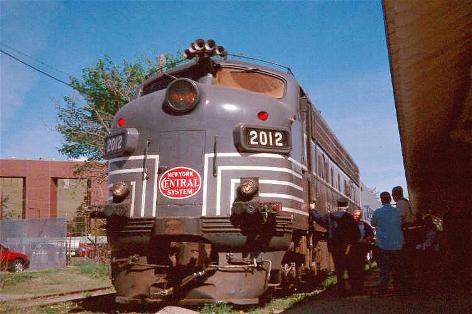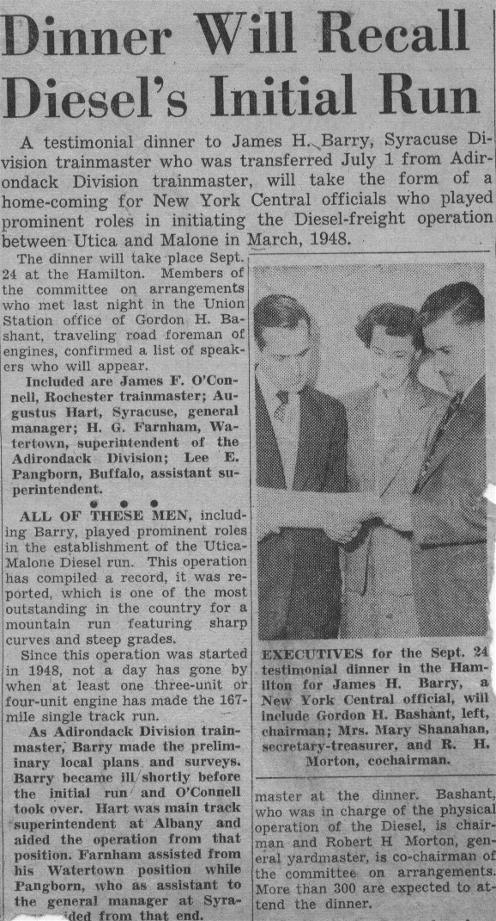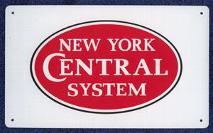 Railroading has aways been in the Bashant blood. It certainly got its start in Tupper Lake because so much of the economy depended on moving materials and people by rail. Many family stories revolved around experiences about railroading. This subsection is dedicted to some of those memories.
Railroading has aways been in the Bashant blood. It certainly got its start in Tupper Lake because so much of the economy depended on moving materials and people by rail. Many family stories revolved around experiences about railroading. This subsection is dedicted to some of those memories.
My father was a Road Foreman of Engines on the New York Central Rail Road and he retired from what became the Penn Central Rail Road when The NYCRR & PCRR merged. Our family life revolve around the sacrifices that were made by a father who was on call 24/7. Holidays were meaningless since rail travel ramped up and the probability of problems increased with the rail traffic volume. A phone call on Christmas day was like a call any day, if there was a problem, dad had to go.
There were benefits. Train rides in the cab of a diesel engine was a thrill.
When I was quite young, typical telephone phone service was based on party lines. You shared the line with several of your neighbors. But because of dad's work, they needed unimpeded access to him so we had a private phone line. That was a big deal!
I recall a particular day when a diesel had derailed, I gave my father my camera and asked him to take a picture. It was winter and the likelyhood of his dragging my too large top view camera out to the scene, seemed remote. But when he came home he handed me the camera and this is the resulting picture.
We lived on railroad time. When the rest of the country went to daylight savings time, the railroad remained on standard time. So in the summer we had "time" and we had "railroad time" always an hour earlier. That always became a family joke when anyone ask what time it was.
This photo popped up on a Penn Central Website and I asked my mother how it came about. I contacted the webmaster and he clarified the content which is below the photo.
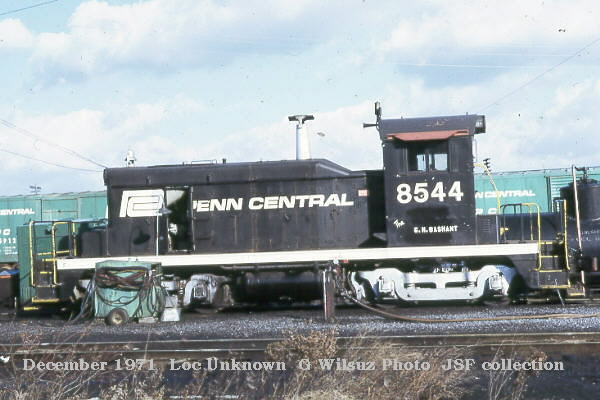
"At an unknown location in December 1971 is PC SW1 8544. Stenciled under the engine number is the name "G.H. Bashant," who was Gordon Howard Bashant, Sr., PC's Road Foreman of Engines until his retirement in 1970. Shop forces honored Mr. Bashant by naming the locomotive for him around the time of his retirement, although he later requested that his name be removed. Also notice the white frame stripe and silver trucks. Penn Central locomotives normally did not receive such a flashy treatment in the paint shop. Photo by G. Wilsuz, Stephen Foster collection."
News articles - Utica Observer Dispatch
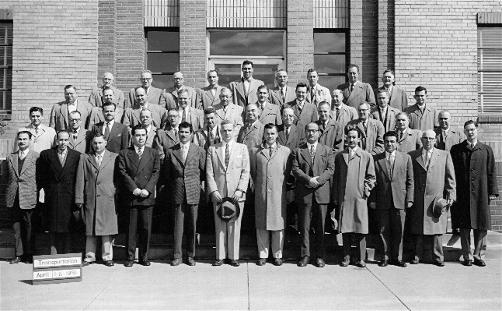
Training class at Elecro-Motive Division, General Motors, Detroit MI. My father Gordon Bashant, third row from bottom, 2nd from right.
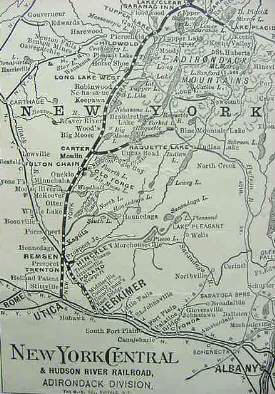
Map of NYCRR Adirondack Division
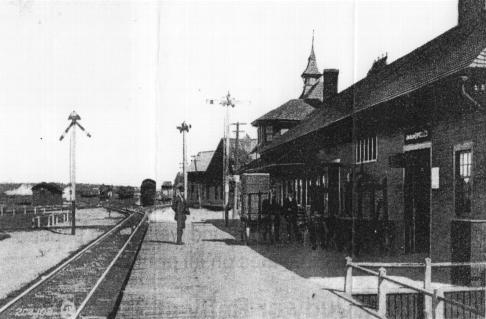
NYCRR Depot, Tupper Lake NY - 1908
Depot and yards at Tupper Lake. Grade crossing with New York & Ottawa Railroad just beyond station, governed by semaphores. Yards are visible to the left. Circa 1908 [Harter Collection]
Tupper Lake Station in Watercolor by Dr. Gordon Bashant
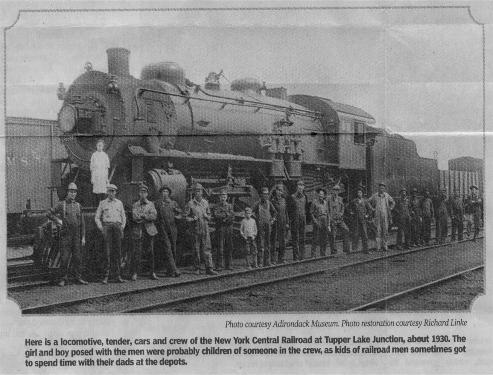
 Family speculation identifies crew member Gordon Bashant, my father, as being 12th from left (9th from right). In 1931 he left Tupper Lake to marry my mother and move to Utica. See Census page, 1930 census. Timing is right and there is a similarity, but no proof.
Family speculation identifies crew member Gordon Bashant, my father, as being 12th from left (9th from right). In 1931 he left Tupper Lake to marry my mother and move to Utica. See Census page, 1930 census. Timing is right and there is a similarity, but no proof.
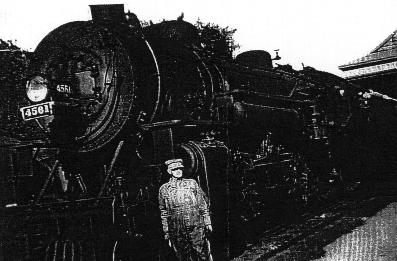
Grandpa Bashant (Senior Steam Locomotive Engineer) Train number 4561, Adirondack Division - Saranac Lake - August 1950, appeared in the Tupper Lake Free Press, April 30, 1997 resulting from an interview with Uncle Floyd on the railroad era.
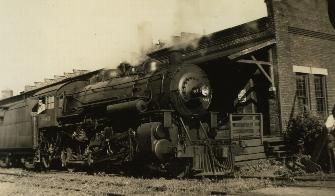

Grandpa Bashant - On and off the train
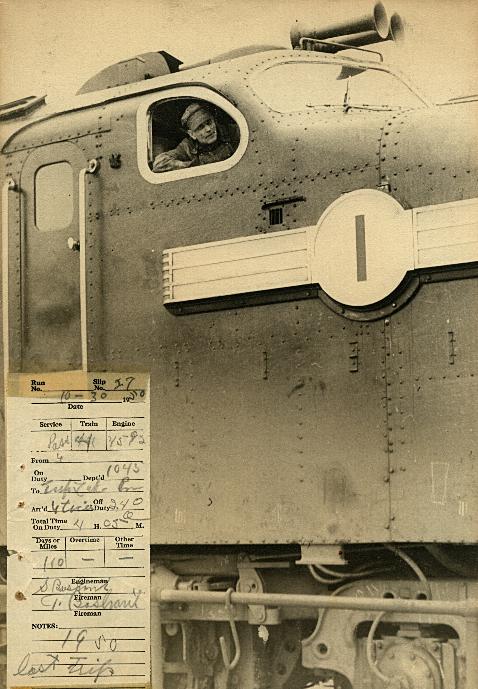
Photo of Grandpa Bashant identifying last trip from Tupper Lake to Utica. Signed by him and his Fireman (and son) Floyd Bashant. This conflicts with Utica Observer Dispatch article on Bashant page. Regardless, this is a great photo of Gramp!!!
1901
Grandpa Bashant's father Levi wins the Oak Desk in a Rail Road Raffel, he is identified as living in Malone, NY at the time.
...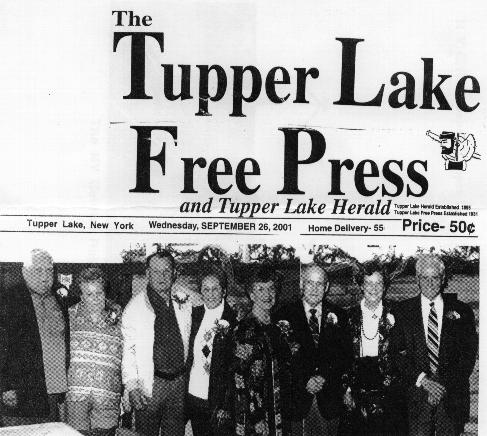
Railroad Men Honored - Four of the guests of honor at Saturday's "Next Stop! Tupper Lake!" benefit are shown above with their wives. From left, Bob Daggett and Lorraine, Louis Malerba and Mary, Florence and Gerald Stone, and Marge and Floyd Bashant.

New York Central Rail Road Station - Utica, New York. Parts of this structure were from the original Grand Central Station in New York City and was disassembled and reassembled as seen here in a pre-war photo, on the site of the present Penn Station in Utica. My father had always said this was the full station moved from NYC piece by piece, but evidence my research indicated differently. I spent many hour is the old station as it was my fater's primary place of work, although in reality his place of work was along the hundreds of miles of track where the engines moved...or didn't move.

Locomotive 759 stops at the New York Central Station, Utica, NY in 1968. This photo and the following photos and accounting of this Locomotive 759 were among my father's affects. He was not particularly sentimental about this kind of documentation until the last few years of his life. Because of his role as Road Foreman, he was often given this kind of memorabilia. I recall he commented that this #759 was the same number as a diesel engine that was giving him particular problems. So even the very number 759 brought bad memories.
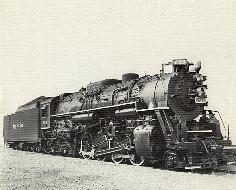

Locomotive 759 - "Locomotive 759 is part of the huge collection of steam locomotives that were saved from the scrapper's torch. This collection is on display at the Connecticut River at Bellows Falls, Vermont."
Railroad Job Descriptions that the Bashaw/Bashant men Performed
Up until the about the mid 1950's, railroaders were a breed apart from the rest of us. They controlled powerful machines, they traveled to far off and exotic places, and they had the respect and admiration of every little boy - and most grown men. The closest modern day job to hold the same admiration and esteem is probably that of airline flight crew, with the pilot having the same status as the engineer of old.
The trainmen were part of a fraternity that worked their way up the ladder. They lived dangerous lives. In one month in 1887, 34 railroaders died in on-the-job accidents. That is a fraction more than one a day! In the entire year of 1888, 2,070 railroaders were killed on the job. Another 20,148 were injured. Be that as it may, railroaders scorned other professions, for theirs was the adventure of the age. Here then, is a description of the various jobs these iron men of Olympus held when our grandparents, great grandparents and even great great grandparents were taming Nebraska.
Brakeman
Prior to 1888 when Westinghouse developed a reliable air brake, stopping a train or a rolling car was very primitive. Iron wheels, located atop cars, were connected to a manual braking system by a long metal rod. The brakemen, usually two to a train, would ride on top of the car. On a whistle signal from the engineer, the brakemen, one at the front of the train and one at the rear of the train, would begin turning the iron wheels to engage the braskes. When one car was completed, the brakeman would jump the thirty inches or so to the next car and repeat the operation to apply the brakes on that car. The brakemen would work towards each other until all cars had their brakes applied. Tightening down too much could cause the rolling wheel to skid, grinding a flat spot on the wheel. When this happened, the railroad would charge the brakeman for a new wheel. New wheels cost $45, which was exactly what a brakeman earned a month. In good weather, the brakemen enjoyed riding on top of the cars and viewing the scenery. However, they had to ride up there in all kinds of weather - in rain, sleet, snow and ice, as well as good weather. Jumping from one car to the next at night or in freezing weather could be very dangerous, not to mention the fact that the cars were rocking from side to side.
Engineer
The locomotive engineer in Nebraska and the rest of the west was a real hero in olden days. The engineer enjoyed the privileges of the office, much like heros of antiquity. The engineer was allowed to have his engine painted whatever colors he chose. He was allowed to alter the sound of the whistle by placing wooden stops in it, to create a unique and distinct sound (this had the side benefit for the engineer - his wife or landlady would learn to recognize that distinct sound, and she knew he would be home soon, so she would have dinner waiting for him when he arrived). The engineer was paid $4.00 a day, but he had to work his way up. Quite often he started out years before as a Wiper in a yard house, then worked his way up to Engine Watchman, then to Switch-engine Fireman, then Road Fireman, then Hostler, then to Engineer.
Fireman
This job probably had the sharpest contrast to that of conductor. There were two types of Firemen. The one learning the trade, called the Switch-engine Fireman, who worked in yard and never left on a traveling or "Road" Engines, and the Road Fireman, who traveled with the freight or passenger trains. The fireman's main job was to shovel coal into the firebox of the engine. Early engines burned from 40 to 200 pounds of coal per mile, depending on the quality of the coal and on the engineer. Another job of the Fireman was to keep the cylinders on the drive wheels oiled while the train was underway. Prior to 1888, this could only be done by climbing out on the running boards and creeping forward alongside the hot boilers and pour tallow on the valves. This duty ended when a device was invented that mixed oil with the water that was turning into steam. This allowed a self-lubrication to take place in the drive piston cylinder and all of the related valves. The fireman new that if he did his job well, in about three years he would move up to Hostler, and then to Switch-engine Engineer before becoming a journeyman Engineer. The Fireman's job paid $2.40 a day.
Section Gang
Section Crews, or Section Gangs as they were commonly known, were responsible for a (large) section of track. They typically rode handcars to look for, and replace, rotted ties, tamp loose spikes, and tighten bolts.
Up until the about the mid 1950's, railroaders were a breed apart from the rest of us. They controlled powerful machines, they traveled to far off and exotic places, and they had the respect and admiration of every little boy - and most grown men. The closest modern day job to hold the same admiration and esteem is probably that of airline flight crew, with the pilot having the same status as the engineer of old. The trainmen were part of a fraternity that worked their way up the ladder. They lived dangerous lives. In one month in 1887, 34 railroaders died in on-the-job accidents. That is a fraction more than one a day! In the entire year of 1888, 2,070 railroaders were killed on the job. Another 20,148 were injured. Be that as it may, railroaders scorned other professions, for theirs was the adventure of the age. Here then, is a description of the various jobs these iron men of Olympus held when our grandparents, great grandparents and even great great grandparents were taming Nebraska. |
Prior to 1888 when Westinghouse developed a reliable air brake, stopping a train or a rolling car was very primitive. Iron wheels, located atop cars, were connected to a manual braking system by a long metal rod. The brakemen, usually two to a train, would ride on top of the car. On a whistle signal from the engineer, the brakemen, one at the front of the train and one at the rear of the train, would begin turning the iron wheels to engage the braskes. When one car was completed, the brakeman would jump the thirty inches or so to the next car and repeat the operation to apply the brakes on that car. The brakemen would work towards each other until all cars had their brakes applied. Tightening down too much could cause the rolling wheel to skid, grinding a flat spot on the wheel. When this happened, the railroad would charge the brakeman for a new wheel. New wheels cost $45, which was exactly what a brakeman earned a month. In good weather, the brakemen enjoyed riding on top of the cars and viewing the scenery. However, they had to ride up there in all kinds of weather - in rain, sleet, snow and ice, as well as good weather. Jumping from one car to the next at night or in freezing weather could be very dangerous, not to mention the fact that the cars were rocking from side to side.
The locomotive engineer in Nebraska and the rest of the west was a real hero in olden days. The engineer enjoyed the privileges of the office, much like heros of antiquity. The engineer was allowed to have his engine painted whatever colors he chose. He was allowed to alter the sound of the whistle by placing wooden stops in it, to create a unique and distinct sound (this had the side benefit for the engineer - his wife or landlady would learn to recognize that distinct sound, and she knew he would be home soon, so she would have dinner waiting for him when he arrived). The engineer was paid $4.00 a day, but he had to work his way up. Quite often he started out years before as a Wiper in a yard house, then worked his way up to Engine Watchman, then to Switch-engine Fireman, then Road Fireman, then Hostler, then to Engineer.
This job probably had the sharpest contrast to that of conductor. There were two types of Firemen. The one learning the trade, called the Switch-engine Fireman, who worked in yard and never left on a traveling or "Road" Engines, and the Road Fireman, who traveled with the freight or passenger trains. The fireman's main job was to shovel coal into the firebox of the engine. Early engines burned from 40 to 200 pounds of coal per mile, depending on the quality of the coal and on the engineer. Another job of the Fireman was to keep the cylinders on the drive wheels oiled while the train was underway. Prior to 1888, this could only be done by climbing out on the running boards and creeping forward alongside the hot boilers and pour tallow on the valves. This duty ended when a device was invented that mixed oil with the water that was turning into steam. This allowed a self-lubrication to take place in the drive piston cylinder and all of the related valves. The fireman new that if he did his job well, in about three years he would move up to Hostler, and then to Switch-engine Engineer before becoming a journeyman Engineer. The Fireman's job paid $2.40 a day.
Section Crews, or Section Gangs as they were commonly known, were responsible for a (large) section of track. They typically rode handcars to look for, and replace, rotted ties, tamp loose spikes, and tighten bolts.
